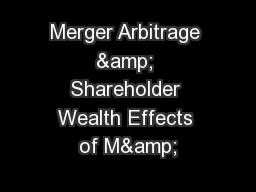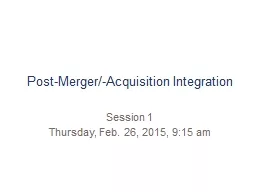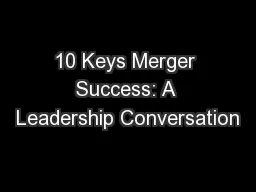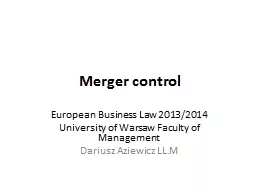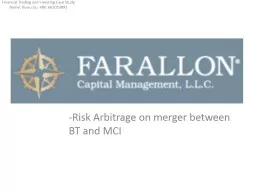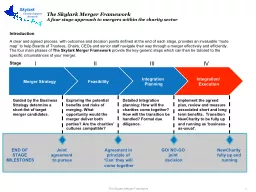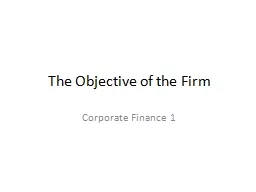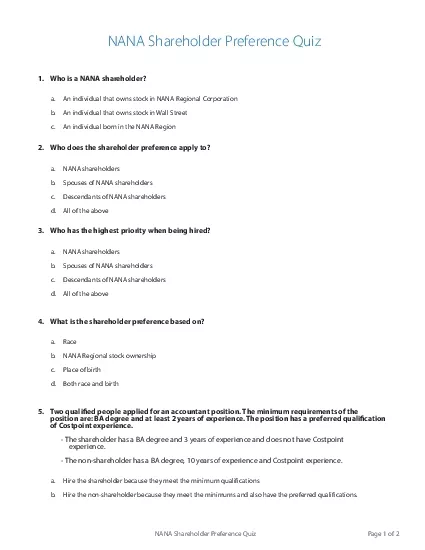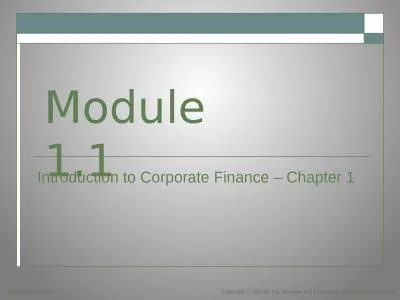PPT-Merger Arbitrage & Shareholder Wealth Effects of M&
Author : liane-varnes | Published Date : 2017-07-19
Chapter 12 Part 1 Distribution of Takeover Premiums 1993 2000 US Number of transactions Source Securities Data Company Target Shareholder Wealth Effects Target
Presentation Embed Code
Download Presentation
Download Presentation The PPT/PDF document "Merger Arbitrage & Shareholder Wealt..." is the property of its rightful owner. Permission is granted to download and print the materials on this website for personal, non-commercial use only, and to display it on your personal computer provided you do not modify the materials and that you retain all copyright notices contained in the materials. By downloading content from our website, you accept the terms of this agreement.
Merger Arbitrage & Shareholder Wealth Effects of M&: Transcript
Download Rules Of Document
"Merger Arbitrage & Shareholder Wealth Effects of M&"The content belongs to its owner. You may download and print it for personal use, without modification, and keep all copyright notices. By downloading, you agree to these terms.
Related Documents

